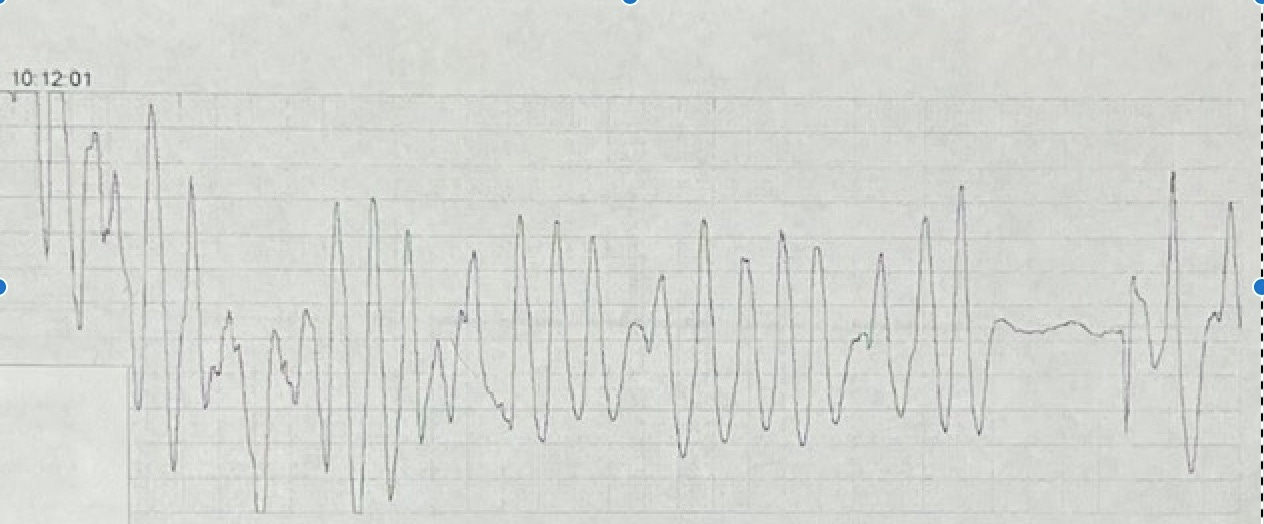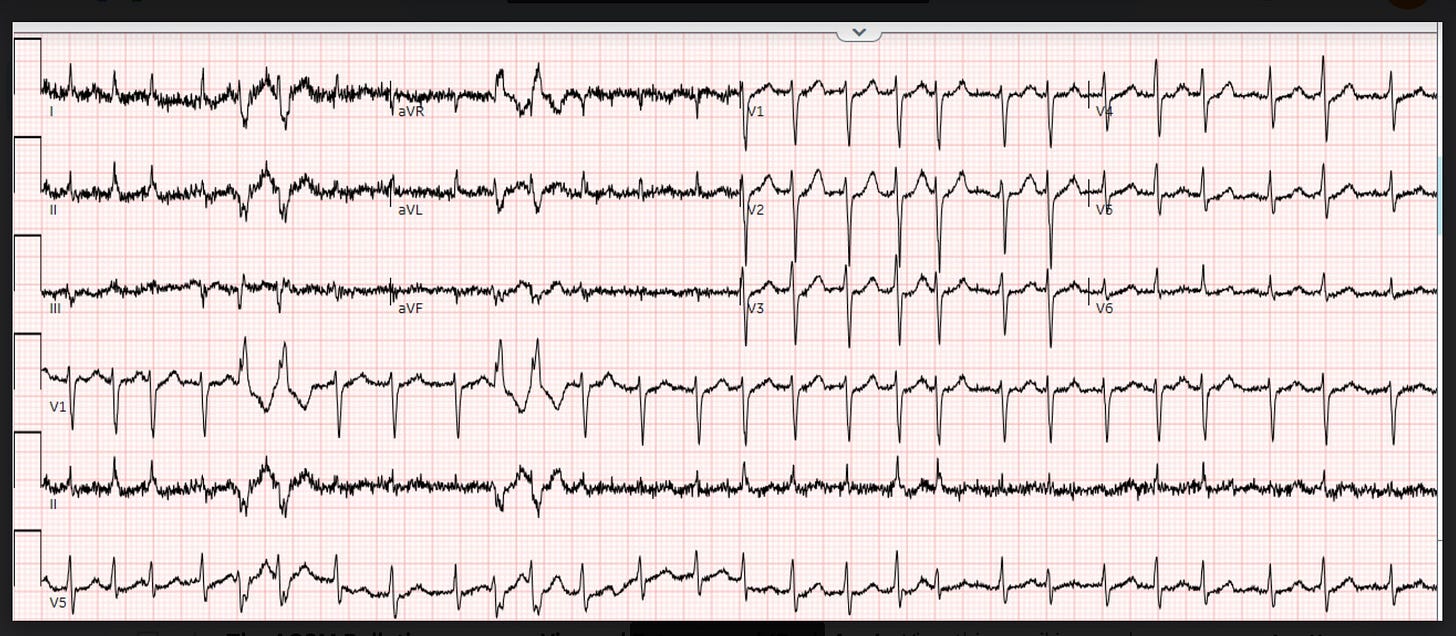Atrial Fibrillation with a Rapid Ventricular Response Can Mimic VT
Remember the Rule of Diagnostic Parsimony
Figure 1
Tracing #1 was obtained by the paramedics who responded to an obese. 38-year old tow truck operator who collapsed while attaching a car to the bed of his truck. The paramedics shocked the patient and administered amiodarone. The patient was in atrial fibrillation (AF) with a ventricular response >150 beats per minute when he arrived in the emergency department.
The rhythm looks to be ventricular - either ventricular tachycardia or ventricular flutter/fibrillation, but it is probably very rapid atrial fibrillation with aberrancy. He was treated with beta-adrenergic blocking agents and converted to normal sinus rhythm overnight.
We have discussed the Ashman phenomenon of AF previously: https://substack.com/@pauldthompsonmd/p-143579794
The rule is that premature ventricular complexes (PVCs) in patients with AF are aberrantly conducted supraventricular beats until proven otherwise. The aberrantly conducted beats occur after a short R-R interval if the prior R-R interval was longer. So, the pattern is long interval, followed by a short interval, followed by the aberrant beat as shown in Figure 2.
Figure 2
The aberrant beat usually has a right bundle branch block pattern because the right bundle is thinner and more vulnerable to aberrancy. The Ashman beat occurs because the recovery time of the conduction system is proportional to the preceding R-R interval. If the R-R intervals remain short because of rapid atrial-ventricular conduction, the aberrancy can persist and mimic ventricular tachycardia or ventricular flutter/fibrillation.
I equate this to the behavior of residents. If the residents were on every fifth night and are told that they are going to be on every fourth night, they get irritable and conduct themselves badly. Their bad behavior can persist if they do not get the rest they want.
So, here are the Rules:
- Follow the Law of Diagnostic Parsimony – make as few medical diagnoses as possible.
- “PVCs” in a patient with AF are really aberrantly conducted AF impulses or the “Ashman phenomenon” until proven otherwise.
- Remember that multiple Ashman beats in succession can mimic ventricular tachycardia or even ventricular flutter/fibrillation.







Great teaching point! Thank you!